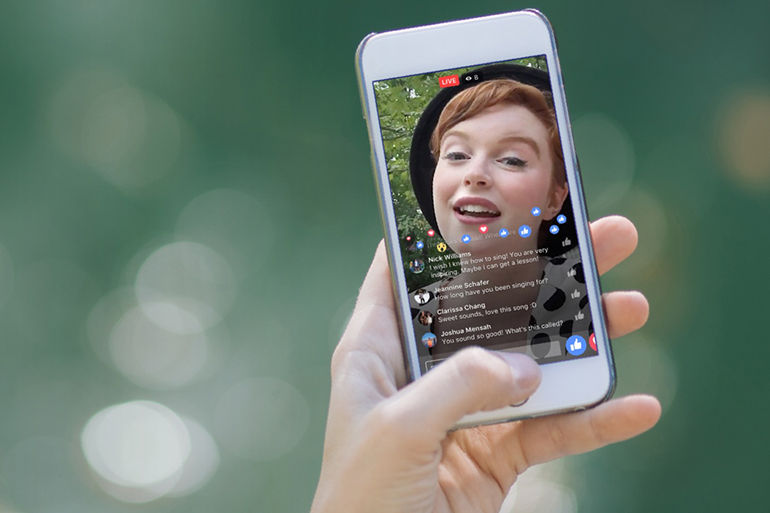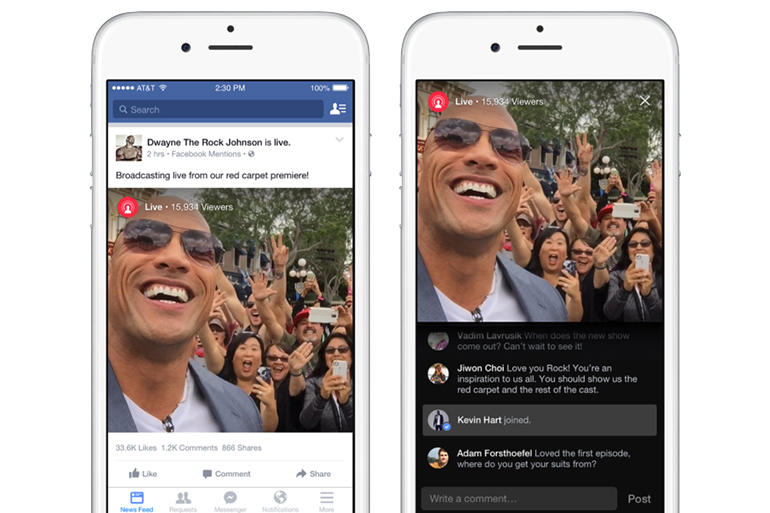 Article courtesy of Eventsforce.
Article courtesy of Eventsforce.
It’s official. Facebook Live is now the most popular live-streaming app platform, surpassing YouTube for the first time, as well as all the other usual suspects like Periscope, Instagram and Snapchat’s Live Stories. And the reason for this success? The Event Manager Blog summarizes it well – anything that has been battle-tested by competitors has been adopted into the platform. And more than that, the tool benefits from the one thing no one can touch: Facebook’s staggering 1.86 billion user base.
Figures released just this month reveal that the time people spend watching live videos on Facebook has grown more than four times over the last year, with one out of every five videos shared being live. Research also shows that people spend three times longer watching live videos than those that aren’t live. Is it any wonder why so many marketers are jumping on the live video bandwagon?
Using Facebook Live at Events
Live video is only going to get bigger as time goes on. In terms of the events industry, Facebook Live has already made quite the impact over the past year – the biggest being the Rio 2016 Olympic games, where an estimated 277 million unique people had 1.5 billion interactions on the platform throughout the two-week sporting event. The ability to record live videos using nothing more than a Smartphone is opening up all sorts of opportunities for smaller events, too – it’s helping them engage with attendees, and it’s also helping them reach out to new audiences.
But as with anything live, things can go wrong. The camera might stop working. The feed might cut off. Your speaker might mess up, or some crisis might unfold…and the whole thing gets broadcast on the Internet. So, needless to say, it helps to be prepared.

Have a look below for some of the most common mistakes you need to avoid when using Facebook Live at your events:
Mistake #1: Not Running a Check on Your Equipment
Run a complete test on the equipment you’ll be using for your live stream—everything from your Smartphone’s microphone and camera to Internet connectivity and battery life. Stay on top of any cables and wiring you need and think of backup in case something goes wrong. Decide who will be responsible for recording the video and whether or not they’ll hold the phone themselves or use some sort of mount.
Mistake #2: Not Testing Your Bandwidth
You should always check the reliability of your venue’s WiFi service because your live feed may drop as a result of poor connectivity. If this happens, you usually have around 2-3 minutes to reconnect to the original stream. Otherwise, you’ll have to generate a new URL for your live stream, which isn’t ideal as you risk losing many of your viewers. Ask your venue provider if their connection has the capacity to support fast and uninterrupted streaming and see what kind of contingency plans they have in case of any issues. Facebook recommends having access to a 4G connection – otherwise, consider using a portable mobile wireless router instead.
Mistake #3: Not Thinking About Sound Quality
If you’ve done live-streaming for a webinar, you’ll know how important it is to have good audio. Try to minimize background noise and ensure your Smartphone or tablet is positioned close to your speaker. Consider using another microphone and brief your speakers so they know they need to speak loudly and clearly throughout the stream. Facebook gives you the option to run a test without sharing the video with anyone else – just use your personal Facebook profile and change the privacy settings to ‘Only Me.’ You can then watch it at your own pace to see if you need to modify anything before your event.
Mistake #4: Not Promoting It Enough
Facebook does a good job of notifying followers the minute you go live and in the immediate period following the broadcast – but don’t depend on these last-minute notifications if you want to maximize your reach. Start by creating a compelling title – once people get a notification that you’re live, the title is the only thing they see when deciding whether they want to join in. Talk about your upcoming live video through news feed posts – a great description will capture people’s attention and help them understand what your broadcast is about (details of the session, speaker names, timings and so on).
Good practice suggests promoting the feed once at least one day in advance, followed by a short reminder before you go live. You can also build interest by sharing updates on other social media networks, posting teaser videos, sending emails to your subscriber lists, offering sign-up forms for live stream alerts, creating a hashtag for it and publishing blog posts relating to the broadcast’s topic. Get your speakers, partners, and employees involved by promoting themselves through their social networks, too. And if you’re streaming something of particular importance, for example, a keynote session, consider boosting your announcement posts through paid Facebook ads.
Mistake #5: Not Engaging Your Live Audience
The earlier you get people engaged in your live conversation, the more likely you’ll be able to take advantage of Facebook’s algorithm, which has been shown to favour live broadcasts over news feeds. The earlier it gets included in news feeds, the more people you’ll get to join in – so get them engaged from the very start. Have your speakers welcome them directly, as well as your attendees in the room. Encourage your viewers to comment and ask questions and engage them by having a dedicated member of your team respond to comments from an on-site computer – remember, the more people who ‘like’ and ‘share’ your live broadcast, the more it will show up in people’s news feeds.
Think about timings too. The longer you broadcast, the more likely people are to discover and invite others on Facebook to watch the video, too. Again, best practice suggests going live for at least 10 minutes – although you can stay live on Facebook for up to four hours for any video. Another thing to think about is making your videos visually engaging. The more visually appealing you can be, the more you can convince your viewers to stick around. That means keeping the camera moving and ensuring your subject/speaker doesn’t sit in one place. Again, This will get your broadcast ranked higher in other people’s feeds. Why? Facebook also measures engagement by monitoring what viewers do, like turning on audio, enabling high-definition or switching to full-screen mode.
Mistake #6: Not Editing Your Video After the Live Feed
Even though your live broadcast is over, there’s no reason to let it fade into the past. Once your Facebook Live video is on your wall, you can go back and edit the description, change the privacy settings or delete the video, just like you would with any other post. Facebook allows you to provide a much longer description at this point – so it’s an excellent opportunity to put something in there that matches the ‘call to action’ you had at the end of your video. One example is a trackable link that can direct viewers to your live video page, your event website, or anywhere else you wish.
Another worthwhile consideration is adding subtitles to your video. Videos on Facebook auto-play without sound, and marketers across the board have seen that very few opt to turn the volume on – in fact, the overwhelming majority of social views of most videos are without sound. Facebook reports that captioning a video increases average video view time by 12% – so it’s worth doing if you have the time.
Mistake #7: Not Measuring the Results
The performance analytics for Facebook Live videos are very similar to regular videos on the platform, and there are some useful additions. You can analyze how much time people spent watching your video, identify peak times throughout the broadcast, and determine how many people you reached and your reactions, comments, and shares. You can also click on each metric to see how it changed over time when the video was live. These stats don’t necessarily prove how live video impacts your event ROI. Still, you’ll be able to see how your Facebook audience engaged with your event and begin to conclude there.
